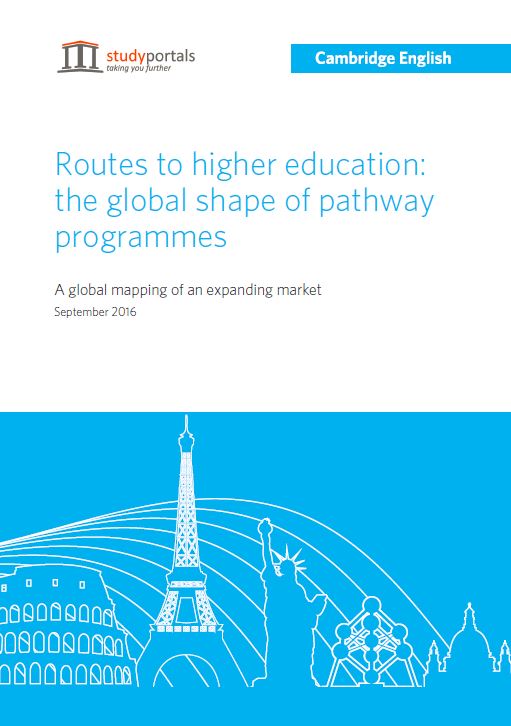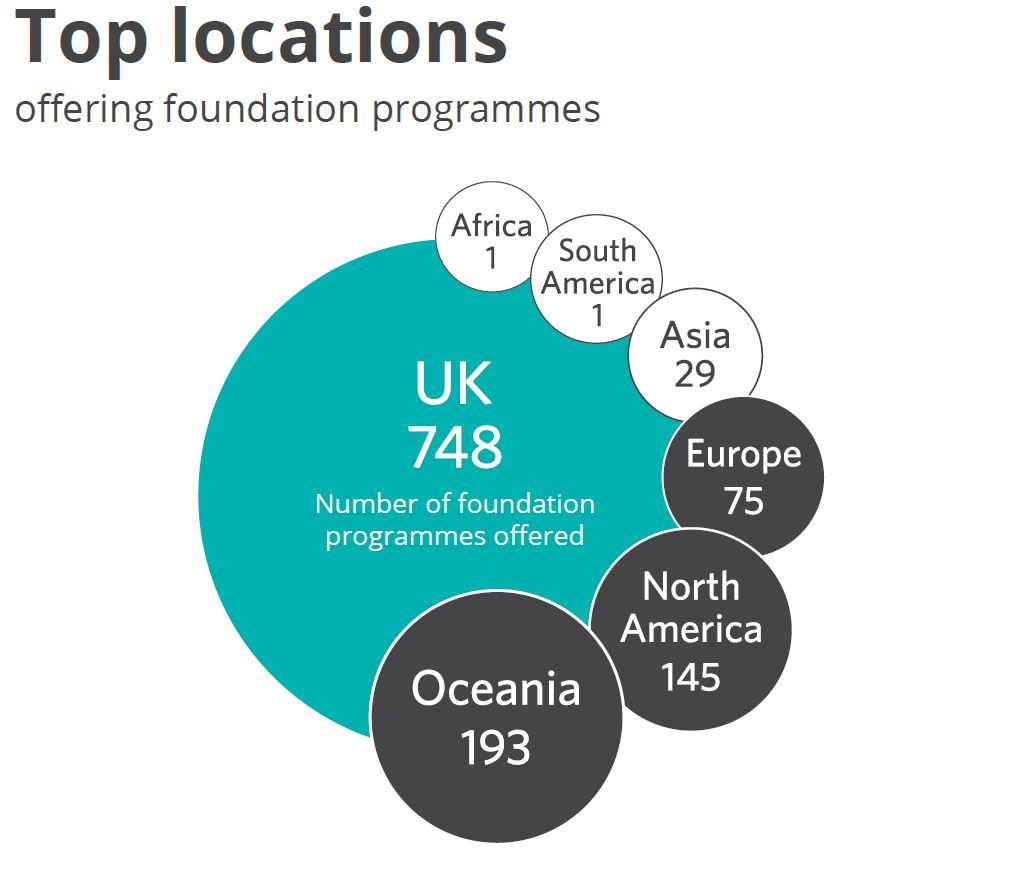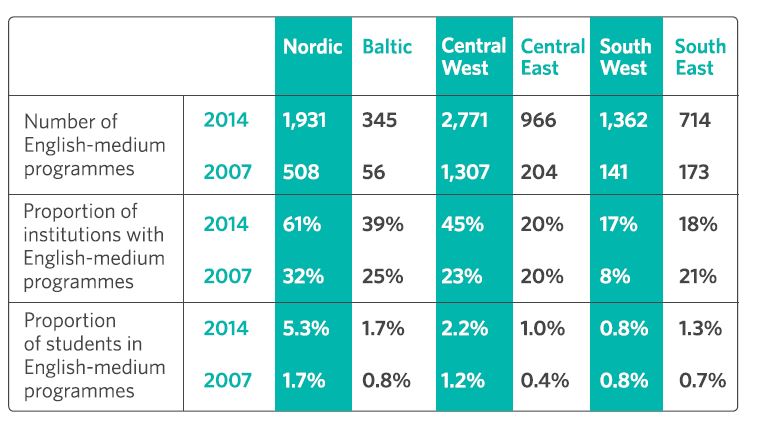Growth trends in pathway programmes
At the beginning of the year, when we first started our research into pathways and foundation programmes around the world, we looked at a total of 1,192 programmes listed on PreparationCoursesPortal.com, which has now grown with 20% to cover over 1,434 study options for students looking to find a foundation course. So far, the UK is clearly dominating the number of study choices, followed by Australia and New Zealand with 193 study programmes, USA and Canada with 145 foundation programmes, and the rest of Europe following with 75 preparation study options. The pathway market is rather dynamic, and has been growing year to year, so we will seek to find out where the next growth potentials are, as detailed in our market report.
Factors influencing foundation growth
According to the experts we consulted for the research, most of these programmes are in English-speaking countries because they have more English-taught undergraduate degrees, which is where students want to matriculate. The numbers of programmes within these areas are strongly influenced by a number of factors, such as
- Government policies regarding the provision of English-taught programmes
- Whether institutions are allowed and willing to charge tuition to international students
- Visa regulations
- Capacity to teach programmes in English
- Perceived market demand.
These factors explain why historically, the UK has been offering more English-taught foundation programmes. With the UK being the second most popular destination for international students, offering foundation programmes to prepare students for higher education life became an important priority. Furthermore, the UK usually differentiates between tuition fees for domestic and international students, and has a high capacity for teaching programmes in English. However, the recent changes to visa regulations are also likely to influence the growth of foundation programmes in the UK, and raises the issue of where these programmes will become more popular in the future.
Pathways growth within Europe
Looking at government policies regarding English-taught programmes, Europe is likely to experience a growth in pathway studies for international students. The number of overall English-taught programmes within continental Europe has been steadily rising from 725 courses in 2001, to 2,389 in 2007, and 8,039 in 2014. As more English-taught degrees are being offered, the demand to prepare students to be able to successfully complete these degrees is becoming more apparent, with Rieks Bos (Groningen University) mentioning in an interview with University World News that these programmes allow universities to diversify their student body:
“The foundation programme enables us to diversify our international student inflow. We’ve actually asked Study Group to limit the number of Chinese students in the foundation year so we can have a good mix of nationalities, with no one nationality accounting for more than 20% of the international student population. The foundation year enables us to get more students from countries like South Korea, Azerbaijan and Russia.”
Within Europe, the areas with the most English-taught programmes that are likely to introduce more pathways programmes are those within Central Western Europe and Nordic countries, which already have over 2,771 and respectively 1,931 English-medium programmes. Countries to watch out for include the Netherlands, Germany, Sweden, Finland, Denmark and Norway.
Pathways growth in other English-speaking countries
Looking at perceived market demand and loosening visa regulations for international students, North America and Oceania have a good growth potential in terms of strong student interest. This view was also recently supported by Tim O’Brien, who sees a lot of growth potential within the US higher education institutions, with Oregon State being used as an example:
“They have gone from 4% international students to 11% in a matter of seven years, boosting their income from international tuition to US$100 million a year and going from having 970 international students to over 4,000.” (University World News).
Regional hubs for international education
Other possible pathways destinations might include regional hubs for international students. Given an increase in higher education within hubs such as South Africa for Sub-Saharan Africa; Singapore, Hong Kong and Malaysia for South East Asia; or South Korea for students from North East Asia, these hubs might become some of the fastest growing study destinations, and increasingly resort to foundation courses to prepare students for university entrance in the view of the British Council. Moreover, students wanting to study in English-speaking countries, might first choose to do a pathway programme within their home country before moving abroad to study for a degree, which could mean potential growth in countries such as China, India, Nigeria, Malaysia, Nepal, Pakistan, Saudi Arabia or Turkey.
Pathway opportunities for non-English-taught programmes
While English is the preferred instruction language for most higher education programmes, and therefore also foundation programmes, the experts interviewed for the report also acknowledged that there might be a smaller growth potential within introducing pathway programmes in languages other than English, with a specific focus on Chinese or Spanish as business languages rising in popularity.
Lack of online growth
One area where our experts do not expect pathways programmes to grow is in the digital world of online or blended education. Since a large component of preparation courses is the cultural adaptation to the local country, it is particularly challenging to include such an intangible aspect into an online course. Interacting with other international students, experiencing a cultural shock and removing language barriers are difficult to do behind a computer and require more intense daily interactions.
Overall, it seems that there is still a significant growth potential in the provision of pathway courses for international students. We’re curious to know what you think the next areas for growth are, so get in touch and share your own impressions with us.

For more updates, follow us!







